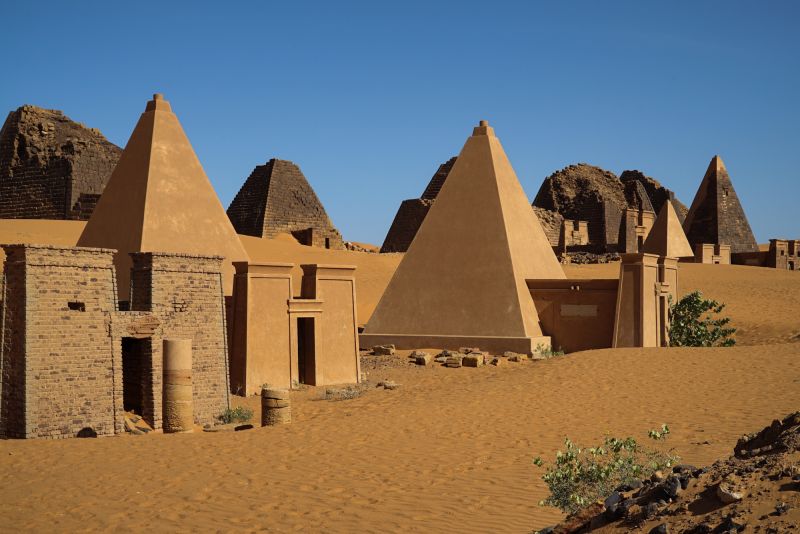By Daily Sports Nigeria on April 21, 2022

Qatar 365 has visited some of Qatar’s most intriguing historical sites – from heritage houses, ancient forts to reconstructed palaces. But what are the challenges of telling the untold stories? And how can future generations benefit from lessons from the past?
Msheireb’s Heritage Houses
Four heritage houses as part of Msheireb Museums, showcase the foundation for the transformation of Qatar. Dating back to the early 20th century, they are part of the redevelopment of downtown Doha.
Bin Jelmood House aims to explain this social period throughout civilisations, as Msheireb Museums’ exhibitions manager, Fahad Al-Turky, explains, ‘part of the mission here is to honour the contribution the slave people made, their cultural and economic contributions, and to tell the history that is oftentimes not told in this part of the world.’
The public can also experience the house of the son of the founder of Modern Qatar as it unravels the story of the Msheireb area. At Radwani House one can explore traditional Qatari living and view the site of one of the first archeological digs in the city. Company House, home to the country’s very first oil company, unveils the changes after the discovery of oil and arrival of electricity.
Digging into the past
Dr. Alexandrine Guerin, the National Museum’s Curator of Archaeology and History, has been visiting Qatar’s archaeological digs since the 1980’s, first for the large excavation site known as Murwab, "the area that is being excavated is from the early Abbasid period, a very important period in Islamic Qatar history. In a way it was a beginning of the golden age. The Gulf began as an expressway for trade, for ideas, and Qatar was on this expressway."
With more than 240 cells and rooms, a mosque, and a fort, the site offers a glimpse into people’s lives in the 9th century. Various sites, some dating back to the 7th century, helped the National Museum to build realistic models and showcase around 900 objects.
Al Zubarah fort: a UNESCO world heritage site
Al Zubarah, the country’s largest archaeological plot is the first Qatari site inscribed into the UNESCO World Heritage list and was a bustling merchant town in the 18th and 19th centuries.
The fort was built by Sheikh Abdullah bin Jassim Al Thani in 1938 as part of a complex system of defense. The site includes the remains of courtyard houses and fishermen’s huts, narrow alleys, mosques and even palaces. A layer of sand blown from the desert has protected the town, causing much of it to remain naturally preserved.
Qatar Museums Head of Excavation and Site Management, Archaeology, Dr. Ferhan Sakal says, "Qatar flourished outside of the control of Ottoman, Persian and European powers. So it is important for the history of the region that it is actually the founding point of today’s political landscape."
Now the fort is home to a visitor centre and museum, with further insight into what daily life was like in this pearl merchant town as well as a vital archaeological record of a lost era.
Source EURO NEWS
Posted April 21, 2022
You may also like...

Taraba FC players and officials held hostage over...

Barcelona Go Second After Late Win Over Valladolid...

Chess Prodigy Deborah Quickpen Ranked Number One In...

Manchester United Defender Eric Bailly Signs New Deal...

Over 1,500 Applications Received For Admission Into Real...

Bayern Fighting To Keep Alaba, Thiago

 Idongesit brothers set for Fencing Junior W’Cup in Uzbekistan
Idongesit brothers set for Fencing Junior W’Cup in Uzbekistan NWFL punishes Ekiti Queens over refs assault
NWFL punishes Ekiti Queens over refs assault Ikpokpo backs Niger Delta Games to unveil new talents
Ikpokpo backs Niger Delta Games to unveil new talents Boxing veteran doubts Joshua–Paul clash will happen
Boxing veteran doubts Joshua–Paul clash will happen Daniel Ford table tennis tourney adds cadet event
Daniel Ford table tennis tourney adds cadet event Khan warns Paul ahead ‘life-threatening’ Joshua fight
Khan warns Paul ahead ‘life-threatening’ Joshua fight Emery's perseverance & belief key to Villa resurgence
Emery's perseverance & belief key to Villa resurgence Agu backs Okoye for Eagles No. 1 spot
Agu backs Okoye for Eagles No. 1 spot PFL contract ends soon - Ngannou
PFL contract ends soon - Ngannou 'No-one downing tools' - Alonso's stay of execution despite loss to Man City
'No-one downing tools' - Alonso's stay of execution despite loss to Man City Zaha in Ivory Coast Afcon squad but Adingra left out
Zaha in Ivory Coast Afcon squad but Adingra left out Rangers International going, going . . . (63,402 views)
Rangers International going, going . . . (63,402 views) Amaju Pinnick: A cat with nine lives (54,646 views)
Amaju Pinnick: A cat with nine lives (54,646 views) Second Term: Amaju Pinnick, Other NFF Heavyweights Home to Roost •How Pinnick Broke the Jinx (52,587 views)
Second Term: Amaju Pinnick, Other NFF Heavyweights Home to Roost •How Pinnick Broke the Jinx (52,587 views) Current issues in Nigerian sports: Matters arising (52,222 views)
Current issues in Nigerian sports: Matters arising (52,222 views) Sports Development: Zenith Bank on the zenith (52,194 views)
Sports Development: Zenith Bank on the zenith (52,194 views) Missing $150,000 IAAF Grant: Solomon Dalung’s Hide and Seek game (52,106 views)
Missing $150,000 IAAF Grant: Solomon Dalung’s Hide and Seek game (52,106 views) Gov. Abdullahi Ganduje’s solid footprints, commitment to sports development in Kano State (51,951 views)
Gov. Abdullahi Ganduje’s solid footprints, commitment to sports development in Kano State (51,951 views) NFF Presidency: Pinnick, Maigari, Ogunjobi, Okoye in Battle for Supremacy (51,535 views)
NFF Presidency: Pinnick, Maigari, Ogunjobi, Okoye in Battle for Supremacy (51,535 views) Olopade, BET9A wave of revolution in NNL (50,676 views)
Olopade, BET9A wave of revolution in NNL (50,676 views) Commonwealth Games 2018: Shame of Muhammadu Buhari, Solomon Dalung (49,225 views)
Commonwealth Games 2018: Shame of Muhammadu Buhari, Solomon Dalung (49,225 views) Ibrahimovic’s Man U exit: Whose decision is it? And in whose interest? (47,618 views)
Ibrahimovic’s Man U exit: Whose decision is it? And in whose interest? (47,618 views) John Mikel Obi: Segun Odegbami’s Outrageous Call! (47,090 views)
John Mikel Obi: Segun Odegbami’s Outrageous Call! (47,090 views)